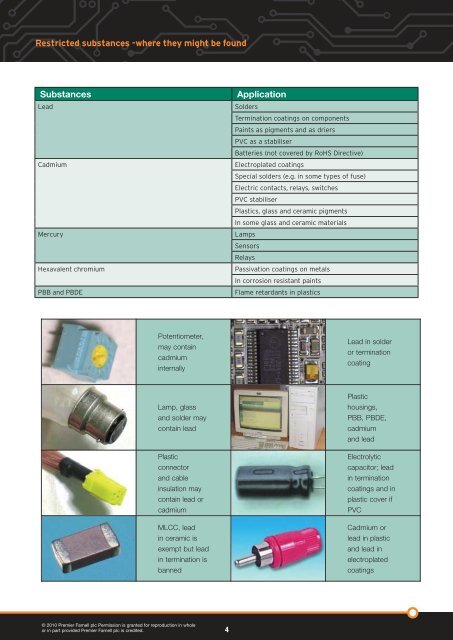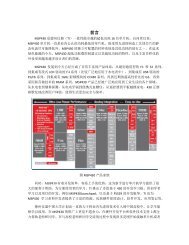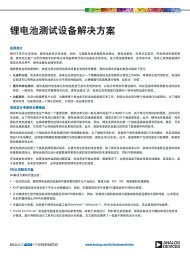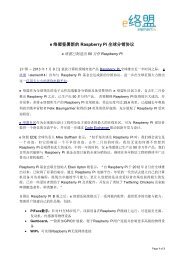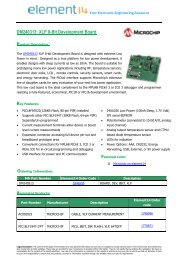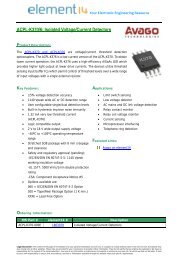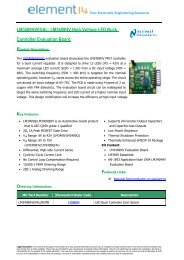RoHS Directive Technical Guide
RoHS Directive Technical Guide
RoHS Directive Technical Guide
Create successful ePaper yourself
Turn your PDF publications into a flip-book with our unique Google optimized e-Paper software.
Restricted substances -where they might be found<br />
Substances Application<br />
Lead Solders<br />
Termination coatings on components<br />
Paints as pigments and as driers<br />
PVC as a stabiliser<br />
Batteries (not covered by <strong>RoHS</strong> <strong>Directive</strong>)<br />
Cadmium Electroplated coatings<br />
Special solders (e.g. in some types of fuse)<br />
Electric contacts, relays, switches<br />
PVC stabiliser<br />
Plastics, glass and ceramic pigments<br />
In some glass and ceramic materials<br />
Mercury Lamps<br />
Sensors<br />
Relays<br />
Hexavalent chromium Passivation coatings on metals<br />
In corrosion resistant paints<br />
PBB and PBDE Flame retardants in plastics<br />
Potentiometer,<br />
may contain<br />
cadmium<br />
internally<br />
Lamp, glass<br />
and solder may<br />
contain lead<br />
Plastic<br />
connector<br />
and cable<br />
insulation may<br />
contain lead or<br />
cadmium<br />
MLCC, lead<br />
in ceramic is<br />
exempt but lead<br />
in termination is<br />
banned<br />
© 2010 Premier Farnell plc Permission is granted for reproduction in whole<br />
or in part provided Premier Farnell plc is credited.<br />
4<br />
Lead in solder<br />
or termination<br />
coating<br />
Plastic<br />
housings,<br />
PBB, PBDE,<br />
cadmium<br />
and lead<br />
Electrolytic<br />
capacitor; lead<br />
in termination<br />
coatings and in<br />
plastic cover if<br />
PVC<br />
Cadmium or<br />
lead in plastic<br />
and lead in<br />
electroplated<br />
coatings


